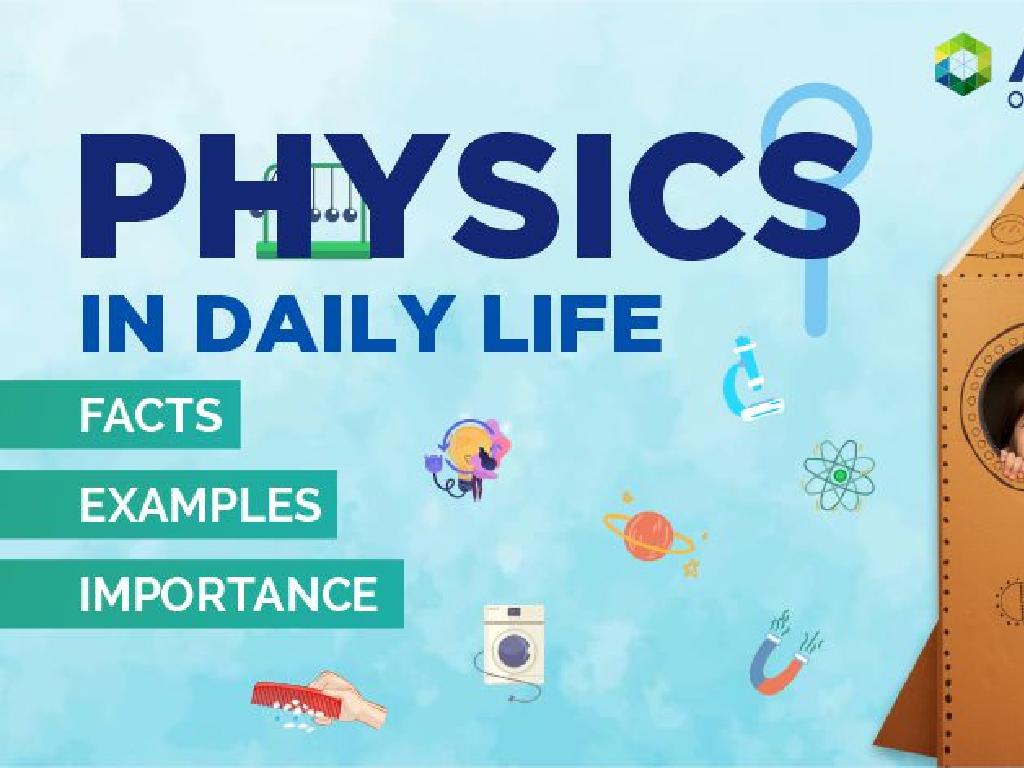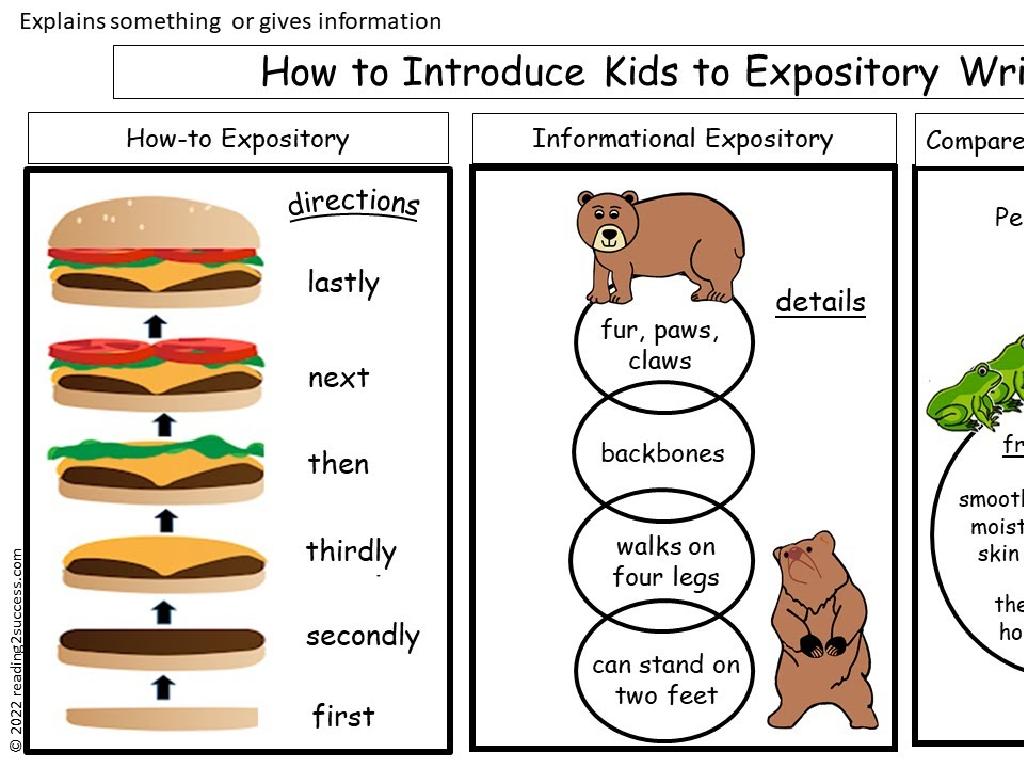Compare Linear Functions: Tables, Graphs, And Equations
Subject: Math
Grade: Eighth grade
Topic: Linear Functions
Please LOG IN to download the presentation. Access is available to registered users only.
View More Content
Comparing Linear Functions
– Understanding linear functions
– A linear function creates a straight line when graphed.
– Real-world linear applications
– Examples: budgeting money, speed of a car over time.
– Comparing functions with tables
– Use tables to observe values and find patterns.
– Comparing functions with graphs and equations
– Graphs show slope visually; equations express relationships algebraically.
|
Today’s lesson focuses on understanding linear functions and their significance in real-world scenarios. Students will learn how linear functions can be represented in different forms – tables, graphs, and equations – and how to compare them. Emphasize the concept of slope and y-intercept in graphs and equations. Use practical examples like budgeting allowance or distance-time relationships in travel to illustrate the applications of linear functions. Encourage students to practice by creating their own tables and graphs, and writing equations to represent linear functions they encounter in daily life.
Understanding Linear Functions
– Define a linear function
– A function with a constant rate of change, straight-line graph
– General form: y = mx + b
– ‘m’ is the slope, ‘b’ is the y-intercept
– Daily life linear function examples
– Mileage tracking: distance = speed x time + start point
– Graphing linear functions
– Plot points on a graph to visualize the function
|
Introduce the concept of linear functions by defining them as functions that graph to a straight line, indicating a constant rate of change. Explain the slope-intercept form of a linear equation, y = mx + b, where ‘m’ represents the slope of the line and ‘b’ represents the y-intercept, the point where the line crosses the y-axis. Provide relatable examples such as calculating the total cost of items (price per item x quantity + tax) or tracking mileage (distance = speed x time + starting point). Emphasize the practicality of understanding linear functions in everyday life. Conclude by showing how these functions can be graphed on a coordinate plane, reinforcing the concept that the graph of a linear function is always a straight line.
Representing Functions: Tables
– Creating a value table for functions
– List input values (x) and compute outputs (y) using the function’s formula.
– Identifying linear functions in tables
– Look for a constant rate of change between x and y values.
– Comparing linear functions with tables
– Use tables to observe differences in rates of change and y-intercepts.
|
This slide aims to teach students how to represent functions using tables, specifically focusing on linear functions. Start by explaining how to create a value table by choosing input values and applying the function’s rule to find the corresponding output values. Emphasize the importance of a constant rate of change in identifying linear functions from tables. When comparing two linear functions, guide students to look at the rate of change and y-intercepts to understand how the functions differ. Provide examples of different linear functions and practice creating and comparing their tables to reinforce the concept.
Representing Functions: Graphs
– Plot linear functions on graphs
– Use points to draw the line of a function
– Grasp slope and y-intercept concepts
– Slope: rise over run, y-intercept: where line crosses y-axis
– Compare functions via graph analysis
– Look at steepness, direction, and y-intercept for comparison
– Interpret differences visually
|
This slide aims to help students understand how to represent linear functions graphically and compare them. Start by plotting linear functions on a graph using given points or a table of values. Emphasize the concepts of slope (the rate at which the function changes) and y-intercept (the point where the function crosses the y-axis). Encourage students to analyze the graphs of different linear functions side by side to compare their slopes and y-intercepts. This visual comparison will help them see which function is increasing or decreasing faster and how their starting points differ. Use examples with different slopes and y-intercepts to illustrate how these features affect the graph’s appearance.
Representing Functions: Equations
– Convert table values to equations
– Use the table to find the rate of change and initial value for the equation y=mx+b
– Impact of ‘m’ and ‘b’ on graphs
– ‘m’ alters the slope, ‘b’ shifts the y-intercept
– Compare functions via equations
– Analyze slopes and y-intercepts to determine differences between functions
– Graphs & equations: a closer look
|
This slide aims to deepen students’ understanding of how to represent linear functions using equations. Start by showing how to derive an equation from a table by identifying the rate of change (slope) and the starting point (y-intercept). Discuss how changing the values of ‘m’ (slope) and ‘b’ (y-intercept) in the equation y=mx+b affects the appearance of the graph. Encourage students to compare different linear functions by looking at their equations and identifying differences in their slopes and y-intercepts. This will help them understand how the graphical representation correlates with the algebraic form. Provide examples of different linear equations and ask students to sketch the corresponding graphs to visualize the impact of ‘m’ and ‘b’.
Class Activity: Function Match-Up!
– Match representations of functions
– Tables, graphs, and equations can all represent the same linear function. Find the matches!
– Collaborate in pairs
– Work together to discuss and solve the match-ups.
– Present findings to class
– Share your matched sets and explain how you determined they match.
– Reflect on the activity
|
This activity is designed to help students understand that linear functions can be represented in multiple ways and that these representations are interconnected. By working in pairs, students can discuss their thought processes and reasoning, which reinforces their understanding. After matching tables, graphs, and equations, each pair will present their findings, explaining how they identified that the representations correspond to the same function. This will also serve as a formative assessment for teachers to gauge student understanding. Possible variations of the activity could include matching different linear functions to their real-world contexts or creating their own representations for given functions.
Conclusion & Homework: Linear Functions
– Recap comparing linear functions
– Significance of linear functions
– Understanding these functions is crucial for solving real-world problems.
– Homework: Real-life linear examples
– Identify examples like speed, savings, or temperature over time.
– Prepare for class discussion
– Think about how linear functions apply to these examples and be ready to explain.
|
As we wrap up today’s lesson, remember that comparing linear functions through tables, graphs, and equations is a key skill in understanding how variables interact in a linear relationship. Grasping this concept is essential as it applies to numerous real-world scenarios, such as calculating speed or tracking savings. For homework, students should find and bring examples of linear functions from their daily lives. This will help them connect classroom learning to the real world. Encourage them to be creative and think critically about where they see linear relationships. In the next class, we’ll discuss these examples to reinforce their understanding and application of linear functions.






